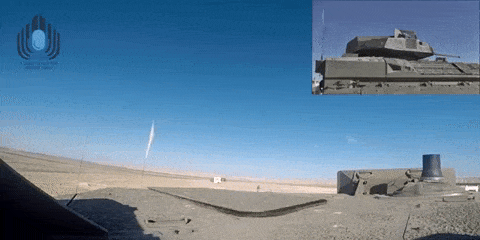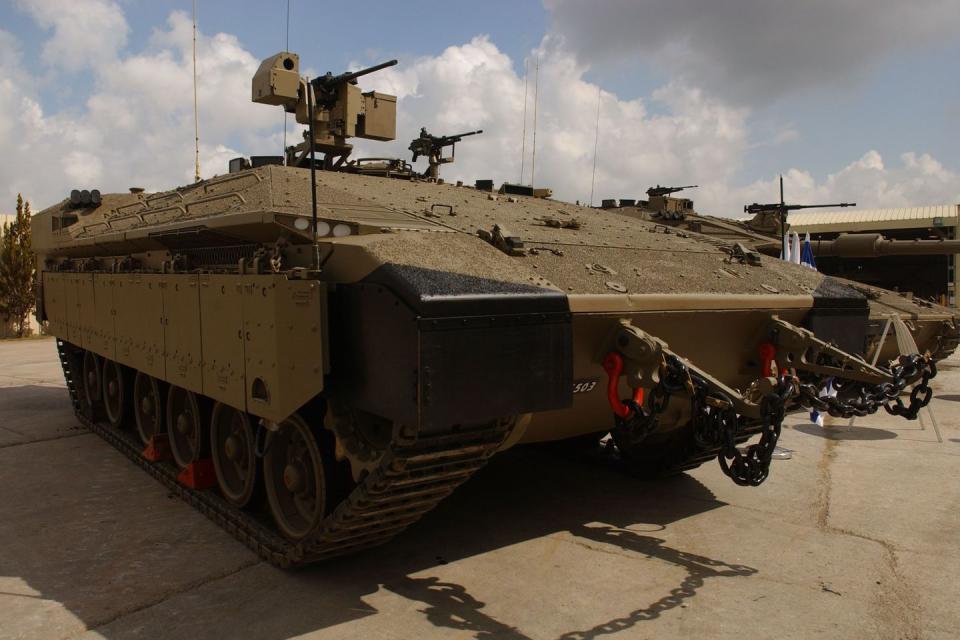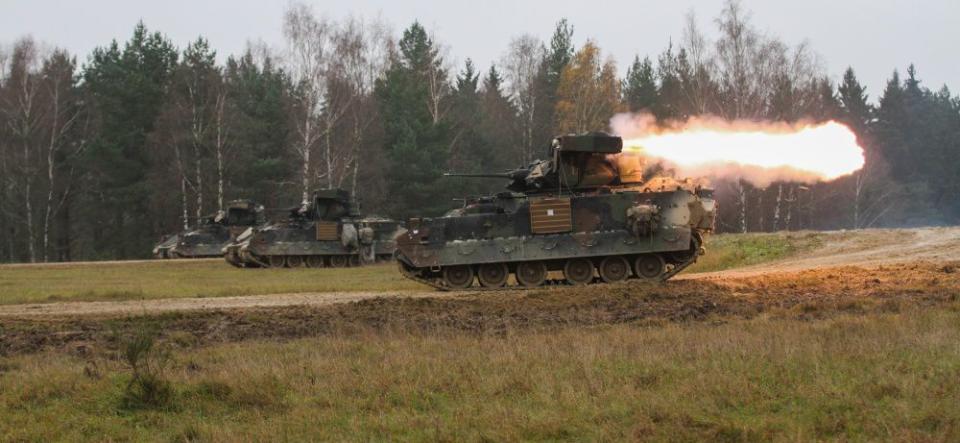Israel's 'Namer' Infantry Vehicle Could Be a Glimpse of the U.S. Army's Future

A video of the Israeli Namer (“Tiger”) infantry fighting vehicle with a pair of important upgrades has popped up on YouTube. The upgrades consist of a new 30-millimeter unmanned turret with a pair retractable anti-tank missiles. The result is the the most heavily armed, and armored infantry carrier in the world.
Israel developed the Namer in the 2000s as a heavy armored personnel carrier designed to carry twelve soldiers-including two crew members-into a battlefield thick with anti-armor weapons, particularly rocket propelled grenades (RPGs) and anti-tank guided missiles. The original Namer was an APC, designed to ferry troops to the front line and then allow them to fight dismounted. That Namer was lightly armed, featuring just a pair of machine guns for self-defense.
The new Namer, with its gun and missile-equipped turret, is more along the lines of an infantry fighting vehicle, meaning the infantry can fight from inside the vehicle if necessary. The heavier 30-millimeter gun means the vehicle can take the offensive, blasting targets behind cover in buildings and engaging armored vehicles. The new turret includes an elevated missile launcher capable of launching two Spike MR anti-tank guided missiles, giving Namer the ability to destroy tanks.

Namer is much heavier than other IFVs, busting the scales at 60 tons. Similar vehicles, including the the U.S. M2 Bradley (32 tons) and Russian BMP-3 (18.7 tons) are much lighter. Oddly enough, infantry fighting vehicles tend to be much less well-armored than tanks, despite the fact that they are exposed to many of the same anti-armor threats and carry two, three, or four times as many troops inside.
Namer, on the other hand, was originally built from tanks. The Israeli IFV was originally designed to recycle the hulls of older Merkava I main battle tanks. (Namer now uses new Merkava IV hulls, making them even more survivable.) This gives Namer-the infantry riding inside-tank-level armored protection. This is reinforced by the Israeli-made Trophy anti-missile active protection system. Trophy uses a ring of radars to detect incoming anti-tank weapons, tracking and then shooting them down with shotgun-like kinetic weapon system.

The Namer’s new unmanned turret offers several advantages over the existing turret on the M2 Bradley. The fact that the turret is unmanned means the any enemy weapon penetrating the turret will be much less likely to kill or injure the vehicle crew. Unlike the TOW anti-tank missile, Namer's Spike MR is a fire and forget missile, meaning the Namer’s gunner can rapidly engage two enemy targets in short order, rather than optically guiding one missile to target, a process that takes several seconds, and then acquiring a new target. Finally, locating the launcher under armor means safer reloading; by contrast the crew of the M2 Bradley must get out of their vehicle and reload the TOW launcher, possibly under enemy fire.
Could the Namer replace the M2 Bradley in U.S. Army service? Previous versions of Namer were under-armed, but the new version is a compelling choice. Although heavier it offers more protection to U.S. infantry. U.S. forces must often be transported thousands of miles to battle zones, making strategic mobility an issue, but the Army must already grapple with deploying Abrams tanks and Bradley infantry fighting vehicles. If the situation calls for faster-deploying forces, there’s always the Stryker brigade combat teams and their family of 8x8 armored vehicles. Namer, or something like it, could be exactly what U.S. heavy armored forces need.
('You Might Also Like',)

